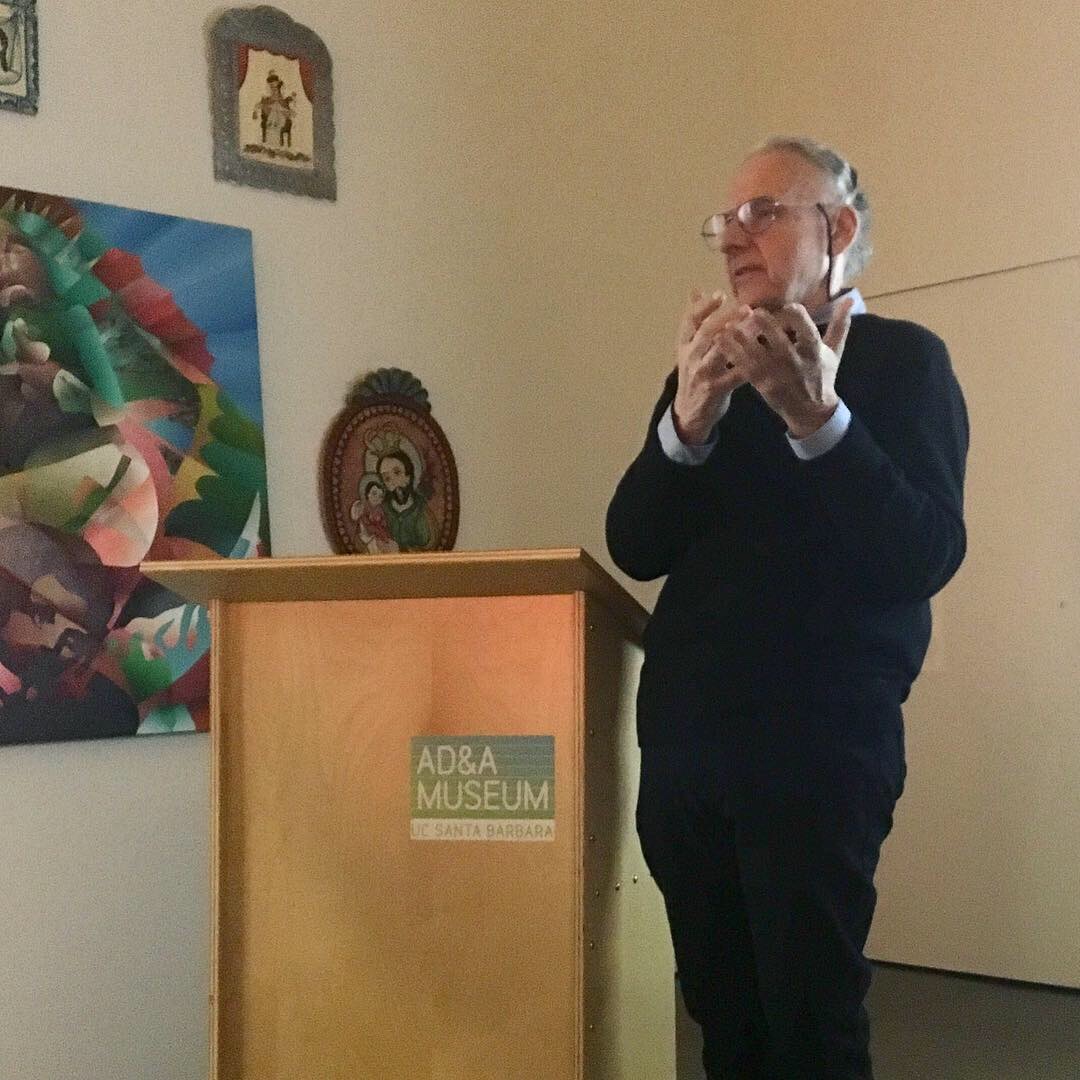By Alyssa Long
John Nava speaks at UC Santa Barbara’s Art Design & Architecture Museum.
Since graduating from UC Santa Barbara’s College of Creative Studies in 1969 with an art degree, contemporary painter and tapestry designer John Nava has risen to fame, intertwining relevant social issues with classical and religious settings and figures in his work.
Last week, Nava returned to his alma mater to discuss his creative evolution with students, staff, and community members at the Art, Design, and Architecture Museum.
Nava channels his fascination with the fine details of the human figure into his work and credits his UCSB art education as the catalyst that led him to discover his artistic voice.
“Antiochus and Stratonice,” 1986
During his time as a UCSB student, Nava’s mentors worked in drastically different styles from his, using large, dramatic brush strokes and loose forms. “I could mimic that, but I couldn’t do it with belief,” he said. Rather than trying to conform to their methods, Nava felt encouraged to find his own voice as a painter.
Nava’s own work is rich in technical detail and delicately fine lines, inspired by the accuracy of artists like Edgar Degas. Upon graduating, Nava asked his mentor, art professor Howard Warshaw, what he should do with his degree. “Find your child,” Warshaw responded, encouraging Nava to explore what really drove him creatively. This advice, Nava said, motivated him to explore timeless social themes across human history.
Nava’s concept work for the Cathedral of Our Lady of the Angels in Los Angeles.
In his presentation, Nava cited artists whom he looked to for inspiration throughout his career. He emulated artists such as Isabel Bishop during the formative years of his education, a social realist who used distressed techniques to create realistic portrayals of everyday scenes. “They were doggedly pursuing their own vision,” he said, a quality that he admires in other artists and one that he continues to strive for.
“2nd of May, 1992, at Los Angeles,” 1992
Nava’s art fuses modernity with classicism, present-day political statements with history. In a tapestry for a new church in Las Vegas, Nava took inspiration from The Last Supper to depict the modern members of the church. In one piece, Nava painted present-day tourists among classical ruins. In another work, Nava derived inspiration from Caravaggio’s dramatic paintings to compose a scene of the L.A. riots, using friends and family as his models.
Nava’s transitioned to the medium of tapestry in order to complete a commission for the Cathedral of Our Lady of the Angels in Los Angeles between 1999 and 2002. Having no prior experience as a tapestry artist, Nava faced the daunting task of creating 36 large tapestries for the walls, depicting modern subjects as Old World saints. Enlisting a loom in Belgium, he began transforming his paintings into textiles using jacquard weaving technology.
“Big Platter,” 2017
Alyssa Long is a second-year student at UC Santa Barbara majoring in communication. She is a Web and Social Media Intern with the Division of Humanities and Fine Arts.






